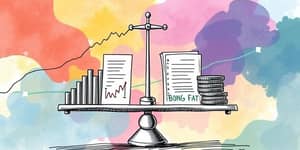
In today’s fast-paced business environment, optimizing bill payments so they align with cash flow is more than just an accounting exercise—it’s a strategic imperative. By carefully timing payables to coincide with inflows, companies can maintain reserves, strengthen supplier relationships, and fuel growth.
Cash flow represents the lifeblood of any business. Monitoring both inflows and outflows is critical to avoiding unexpected shortfalls. A clear view of when money arrives and when it departs allows decision-makers to plan investments, manage payroll, and handle unforeseen expenses without panic.
Effective cash flow management involves analyzing receivables, payables, and operating activities. Businesses that adopt dynamic real-time cash flow modeling can answer key questions instantly: What happens if a major client delays payment by 30 days? How will a supplier’s early-pay discount impact week-to-week reserves?
Streamlining payables is crucial for preserving working capital. When high-volume businesses process thousands of bills every month, manual entry can become a bottleneck. By automating data capture and routing invoices for digital approval, companies can reduce manual data entry errors and accelerate payment cycles.
Delaying payment until just after receivables arrive maximizes liquidity. However, stretching terms too long can strain vendor relationships. The goal is the “sweet spot”—not too early, not too late, ensuring timely settlement without draining reserves.
Faster collections strengthen your cash position and reduce reliance on credit lines. Automating invoicing, sending digital reminders, and offering incentives can make a dramatic difference. In fact, post-pandemic, 78% of consumers adopted new payment methods, proving that digital solutions reduce friction and speed receipts.
By providing multiple payment options—credit cards, ACH, mobile wallets—businesses can meet client preferences and shorten the days-sales-outstanding (DSO). Clear, specific payment terms further minimize disputes and delays.
Traditional monthly spreadsheets don’t cut it in volatile markets. Real-time dashboards and scenario planning tools empower finance teams to anticipate shortfalls and surplus. With data-driven financial decision making, you can model “what-if” scenarios: What if sales dip by 15%? How does changing supplier terms impact cash on hand?
These insights drive proactive measures—securing temporary financing, adjusting payment schedules, or accelerating receivables—to smooth out peaks and valleys.
Automated systems streamline every step of AP and AR. Artificial intelligence can match invoices to purchase orders, flag potential fraud, and suggest optimal payment dates based on cash flow forecasts. Teams that adopt diverse multi-channel payment platforms reduce processing time and free up staff for strategic tasks.
These improvements not only accelerate cash cycles but also enhance accuracy, reduce late fees, and strengthen compliance.
Regularly reviewing and renegotiating vendor agreements can uncover opportunities to extend terms or earn early-pay discounts. Aim for terms that align with your receivables schedule. For example, shifting from Net 30 to Net 45 may ease short-term strain, while still preserving supplier goodwill.
Minimizing the gap between receivables and payables—your cash conversion cycle—enhances operational flexibility. Streamline AR and AP processes, adopt subscription billing where appropriate, and synchronize payment runs with deposit dates. Over time, even small reductions in this cycle compound into significant liquidity gains.
Embracing these innovations positions businesses to respond swiftly to market shifts. By automating routine tasks and focusing on strategy, finance teams become true partners in growth, rather than back-office support.
Optimizing bill payments to match cash flow is a journey, not a one-time fix. It requires continuous review, the right technology, and a proactive mindset. When done effectively, it transforms cash management from a reactive scramble into a deliberate, create a frictionless payment journey that energizes your entire organization.
References













